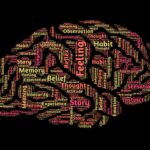Introduction:
Motivation and emotion are two fundamental aspects of human experience that shape our thoughts, actions, and overall well-being. Understanding the psychological and physiological underpinnings of motivation and emotion can provide valuable insights into human behavior and provide a foundation for personal growth and development. This blog post explores the intricate relationship between motivation and emotion, delving into their psychological and physiological basis, measurement techniques, their effects on behavior, and the concepts of extrinsic and intrinsic motivation. Additionally, we will explore the factors influencing intrinsic motivation and the importance of emotional competence in navigating the complex realm of emotions.
Psychological and Physiological Basis of Motivation and Emotion:
Motivation can be described as the driving force that directs and sustains behavior towards a particular goal or outcome. It is influenced by a complex interplay of psychological and physiological factors. From a psychological perspective, motivation is influenced by a range of cognitive processes, such as perception, attention, memory, and decision-making. These processes involve the evaluation of external stimuli, personal goals, and the anticipation of rewards or punishments.
On the physiological front, motivation is closely tied to the activity of the brain’s reward system, which involves the release of neurotransmitters like dopamine. The reward system plays a crucial role in reinforcing behaviors that lead to pleasurable outcomes, thereby fueling motivation. Emotion, on the other hand, is a multifaceted experience characterized by subjective feelings, physiological changes, and behavioral expressions. It involves the activation of various brain regions, including the amygdala, hippocampus, and prefrontal cortex.
Measurement of Motivation and Emotion:
Measuring motivation and emotion is a complex task, as these constructs are inherently subjective and deeply personal. Researchers have developed a variety of techniques to capture these phenomena. Self-report questionnaires, such as the Achievement Motivation Scale and the Positive and Negative Affect Schedule, are commonly used to assess motivation and emotional states. These tools rely on individuals’ self-perception and their ability to accurately report their experiences.
In addition to self-reports, researchers also employ physiological measures to gain insights into motivation and emotion. Techniques like electroencephalography (EEG), functional magnetic resonance imaging (fMRI), and heart rate variability (HRV) can provide objective data on brain activity, neural responses, and autonomic nervous system functioning.
Effects of Motivation and Emotion on Behavior:
Motivation and emotion play a pivotal role in shaping human behavior. Motivation serves as a driving force behind goal-directed actions and influences the persistence, intensity, and direction of behavior. When individuals are highly motivated, they are more likely to engage in tasks with enthusiasm, exhibit higher levels of effort, and persevere in the face of challenges.
Emotions, on the other hand, can significantly impact behavior by influencing decision-making processes and social interactions. Positive emotions, such as joy and excitement, tend to broaden an individual’s cognitive and behavioral repertoire, promoting creativity and exploration. Conversely, negative emotions, like fear and anger, can narrow one’s focus, triggering defensive responses and impeding problem-solving abilities.
Extrinsic and Intrinsic Motivation:
Motivation can be categorized into extrinsic and intrinsic motivation. Extrinsic motivation refers to engaging in an activity for external rewards or to avoid punishment. It stems from factors such as financial incentives, social recognition, or fear of consequences. In contrast, intrinsic motivation refers to engaging in an activity for its inherent satisfaction or personal fulfillment. Intrinsic motivation is driven by internal factors like curiosity, autonomy, mastery, and the desire for personal growth.
Factors Influencing Intrinsic Motivation:
Several factors can either enhance or diminish intrinsic motivation. One crucial factor is the individual’s sense of autonomy, or the perceived sense of control and choice over one’s actions. When individuals feel a sense of autonomy, they are more likely to engage in activities willingly and experience greater intrinsic motivation.
Another critical factor is the presence of mastery and competence. When individuals feel capable and competent in a particular domain, they are more likely to experience intrinsic motivation to engage in related activities. The presence of relatedness, or a sense of connection and belongingness, is also vital in promoting intrinsic motivation.
Emotional Competence and Related Issues:
Emotional competence refers to the ability to recognize, understand, and regulate one’s emotions effectively. It involves emotional self-awareness, emotional regulation, empathy, and social skills. Developing emotional competence is crucial for navigating the complexities of emotions, managing interpersonal relationships, and maintaining psychological well-being.
However, issues related to emotional competence can arise, leading to emotional dysregulation, such as mood disorders, impulsivity, and difficulties in social interactions. Cultivating emotional intelligence through self-reflection, mindfulness, and emotional regulation techniques can help individuals enhance their emotional competence and cope with emotional challenges effectively.
Conclusion:
Motivation and emotion are intertwined aspects of human experience that significantly influence our behavior, decision-making, and overall well-being. Understanding the psychological and physiological basis of motivation and emotion provides valuable insights into human behavior. By exploring measurement techniques, the effects on behavior, and the concepts of extrinsic and intrinsic motivation, individuals can better understand their own motivations and find ways to enhance their intrinsic motivation. Additionally, recognizing the importance of emotional competence and addressing related issues can empower individuals to navigate their emotions effectively and foster healthy relationships with themselves and others.







